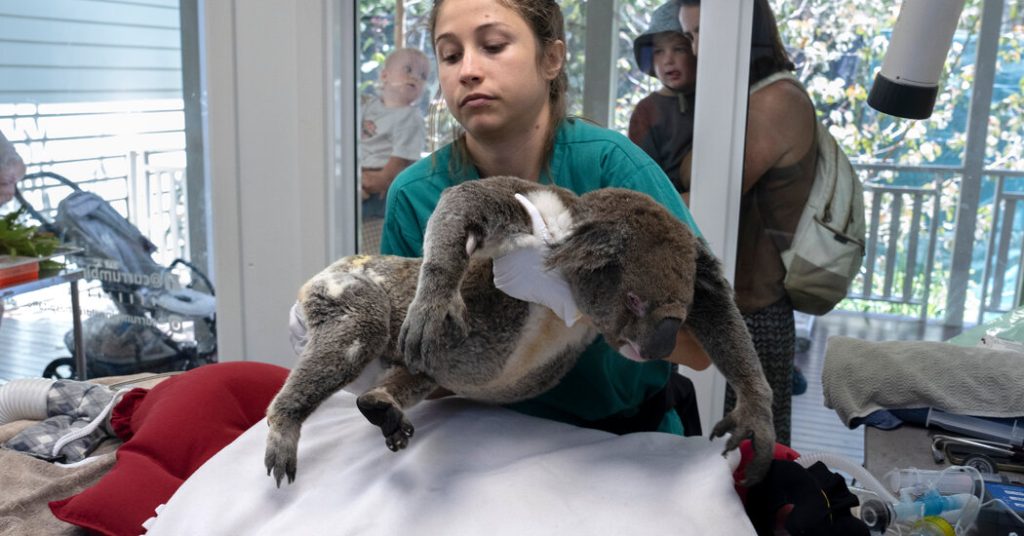The Currumbin Wildlife Hospital in Queensland, Australia, is a busy place during the spring season, with many wild animals coming in for treatment. Dr. Michael Pyne, the hospital’s senior veterinarian, sees a variety of animals, from swans to flying foxes to eagles. More than a dozen koalas were also being treated, many of them with injuries caused by factors such as deforestation, climate change, infectious diseases, and traumatic injuries. The hospital has seen a fourfold increase in koala admissions since 2010, largely due to the spread of chlamydia, a devastating bacterial infection.
The koala population in Australia has been declining due to various threats, putting them at risk of extinction. Conservation groups and scientists are working tirelessly to save the koalas, using both traditional and experimental approaches. One approach involves developing a chlamydia vaccine for wild koalas, which has shown promising results in several ongoing studies. Another experimental method involves giving koalas probiotics to maintain their gut microbiome balance, particularly important for koalas being treated with antibiotics for chlamydia.
To better monitor and protect koala populations, researchers are using innovative technologies such as drones equipped with thermal cameras to spot koalas hidden in treetops. The drones, powered by artificial intelligence, can help conservation groups identify critical habitats and estimate total koala populations in specific areas. Additionally, the World Wide Fund for Nature-Australia is using drones for habitat restoration, planting thousands of seeds with each flight to help regenerate koala habitats.
Conservationists are also harnessing public interest in koalas by developing a mobile app that tracks koalas using solar-powered ear tags. The app aims to connect people with their local koalas, encouraging empathy and support for conservation efforts. Users can log koala sightings and report sick koalas through the app, providing valuable data to scientists and wildlife care teams. The ear tags could also help locate injured koalas more efficiently, particularly after events such as wildfires, when time is critical for rescue and treatment.
Overall, the koala conservation efforts in Australia are multi-faceted, combining traditional methods such as habitat protection with cutting-edge technologies like drones and probiotics. The goal is to save this iconic species from the various threats it faces, including deforestation, infectious diseases, and climate change. Every koala counts, and urgent action is needed to ensure their survival for future generations.


